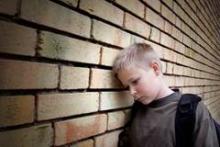Children who suffer bullying are more than twice as likely to have psychosomatic complaints as are their peers who are not bullied, according to a study published online Sept. 16 in the journal Pediatrics.
"Consider bullying as a possible risk factor in any patient with recurrent headaches, breathing problems, poor appetite, sleeping problems, and so on," advised coauthors Gianluca Gini, Ph.D., and Tiziana Pozzoli, Ph.D.
Indeed, "Any recurrent and unexplained somatic symptom can be a warning sign of bullying victimization," they added.
In the new meta-analysis, a follow-up to their 2009 effort (which included 11 studies), Dr. Gini and Dr. Pozzoli, of the University of Padua, Italy, looked at 30 studies of bullying and psychosomatic problems from around the world (Pediatrics 2013 [doi:10.1542/peds.2013-0614]).
A total of 219,560 children and adolescents were included, with about 50% female.
All studies had to include both reports of bullying and of psychosomatic complaints, as well as a control group of children or adolescents who were not bullied.
In total, the authors included six longitudinal studies and 24 cross-sectional designs in their meta-analysis.
Looking first at the longitudinal data only, Dr. Gini and Dr. Pozzoli found that bullied children had a significantly greater likelihood of experiencing psychosomatic problems, with an odds ratio of 2.39 (95% confidence interval, 1.76-3.24; P less than .0001).
The authors then calculated the risk for subjects enrolled in the remaining 24 cross-sectional studies.
Similarly, in this subset, bullied students were more than twice as likely to have psychosomatic complaints (OR, 2.17; 95% CI, 1.91-2.46; P less than .0001).
Next, the authors looked to see whether any factors such as the type of informant (the bullied child himself, vs. the parents, vs. another child), the geographic location, or the gender ratio of a particular cohort moderated the results.
Among these, only an increase in the number of female participants was found to have a significant moderating effect on the result, weakening the relationship somewhat; neither of the other two factors tested had any significant effect on the results.
When asked about the study, Dr. David Fassler said the findings contribute to the growing body of research on the adverse and lasting effects of bullying on both physical and emotional health.
"Despite increased awareness and sensitivity, bullying remains a common experience for many children and adolescents," Dr. Fassler, clinical professor of psychiatry at the University of Vermont in Burlington, said in an interview. "Surveys indicate that as many as half of all children are bullied at some time during their school years, and at least 10% are bullied on a regular basis."
For their part, the researchers conceded several important limitations in their study.
For one, they wrote, "Much variability exists in the methods and instruments used to assess the prevalence of symptoms and peer victimization experiences."
Future studies ought to use validated instruments to assess both experiences of bullying and psychosomatic complaints.
They also pointed out that none of the studies assessed different forms of victimization separately – for example, physical victimization vs. relational victimization – and the authors were therefore unable to analyze how these different forms might affect children in different ways.
Nevertheless, "Since the former meta-analysis, the number of studies testing the association between bullying experiences and psychosomatic problems has tripled," wrote the authors.
"We can reasonably conclude that this association is established, and we call for new research efforts aimed at elucidating the mechanisms through which bullying affects children’s health."
The authors stated that they had no financial relationships to disclose and that they received no outside funding.


